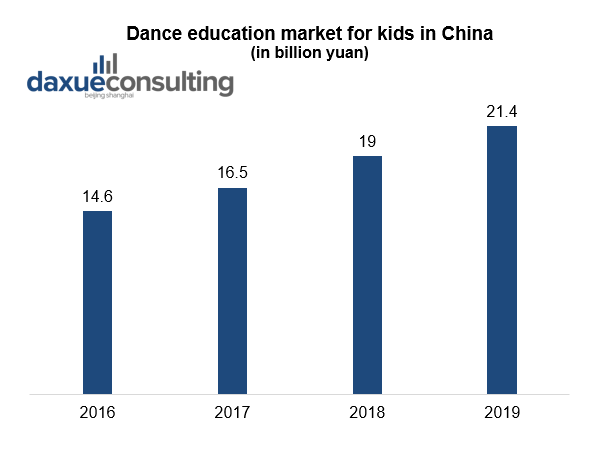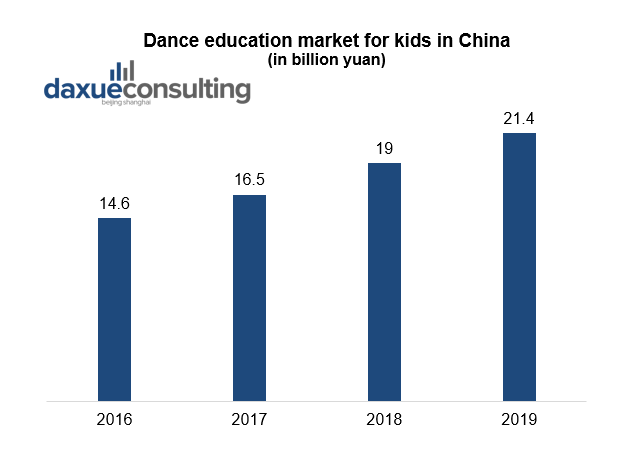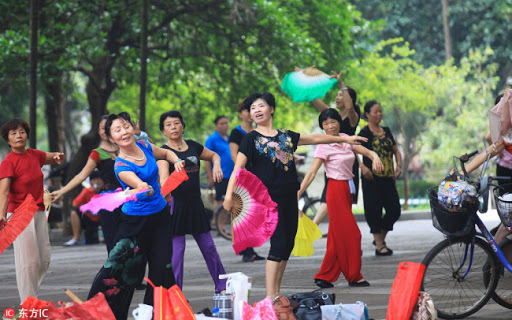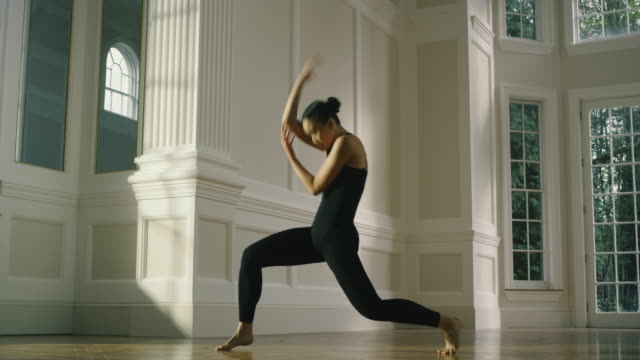According to Zhiyan Consulting, the dance education market in China reached 43 billion yuan in 2020. Predictions show that this number will grow to 93 billion yuan in 2025. In terms of average spending on dance classes, the annual cost of dancing class in China is about 2,400 yuan. The overall penetration rate of dance classes in China is about 5.8%, but this number is growing amid the pandemic and the desire of people to be healthy and fit.

Dance education is the leader in terms of hobby for Chinese people
China’s economic development is fueling a growing interest in various arts hobby as more and more people can afford it. Currently, in the structure of China’s art education market, dance teaching and music teaching occupy the first two places with a market share of more than 30%, while drawing teaching takes the third place, accounting for about 25%.
According to Guangzheng Hang Seng, as of August 2019, there were 38,986 offline dance schools in China.
First-tier cities in China attract the most amount of dance lovers
The leaders in the dance industry are cities such as Beijing, Shanghai and Guangzhou. These provinces held a total of 860 dance performances in 2016 reached 860, which was 42% of the country’s total dance shows.

Shanghai in particular has a rich dance culture. The Shanghai International Dance Center opened its’ doors in 2016. It features a large theater with 1080 seats as well as a combined rehearsal hall (small theater) with 300 seats, and also harbors the Shanghai Ballet Company, the Shanghai Song and Dance Troupe, the Shanghai Theater Academy Dance Academy, and the Shanghai Dance School.
Dance classes in China: youth is a key consumer group
Dance education is divided into adult dance training and children’s dance classes in China. Children’s dance education occupies the biggest part of the dance education market in China. Chinese parents believe that dancing contributes to the development of children’s intelligence, the improvement of aesthetic ability, and the enhancing of physical and mental health.
In the past, dance education for kids in China included mostly ethnic dance. In recent years, Chinese first-tier cities such as Beijing and Shanghai have taken the lead in introducing a variety of emerging dances. Nowadays, children’s dance classes in China have a rich variety of dances, including jazz dance, Latin-American dance, modern dance, Chinese dance, street dance, etc.
Dance education for kids in China is on the rise

As of 2019, the number of domestic dancing training institutions for kids reached 9,120, an increase of 7.1% compared to 2018. The compound growth rate of the number of dance schools in China from 2013 to 2019 was 9.2%. In 2019, the Children dance education market in China was 21.4 billion yuan, 10% YoY growth comparing to 2018.

Little Swan Art Center, I see Cinderella and Red Dance Shoes are the three largest offline dance training companies on the market, with about 488 offline dance training centers. This represents 1.25% of the total number of children’s dance schools.
The new generation of parents chooses dancing education for their kids
Parents’ expectations for the development of their children’s abilities directly affect demands for the dance education market in China. Arts education is at the forefront of the choice of hobby for Chinese children. The awareness of a new generation of parents about dance education has increased, and they have begun to pay more attention to the entertainment and development of children’s interest.
Interest in art classes is high and about 29.7% of parents are considering enrolling their children in dance classes. Arts education has the earliest age to start and the highest acceptance rate.

Over 70% of parents think that under 4 is the best age for their children to start learning dance. More and more parents in China pay attention to dance lessons from an early age. The lower age allows more parents to choose dance for their children, not for matriculation exams or professional dancing school entrance, but in order to develop their interest in dancing.
When choosing dance schools, 62.7% of parents found schools through relatives and friends, and 28.6% of parents saw ads on social networks.
Square dancing courses is an integral part of the dance education market in China
Why is it so popular in China?
In China, you can often see people dancing in squares. The collective dancing craze began in the 1990s, when millions of people lost their jobs in state-owned companies as China shifted to a more capitalist model. Then people had limited financial opportunities and collective dances became one of the options to keep fit and healthy. Dancing in public parks has become an ideal option for low-cost fitness.
There are very few rules in square dance. This is usually a group of people with a lead dancer or teacher in front of them. The lead dancer is a professional with knowledge of music and movement. The rest of the group just follows the leader in rhythm. Each group can be from 5-6 people to over 100 people. The cost of entering the group of dancers varies from 50-100 yuan annually.
Square dancing attributes bring huge profit on the ecommerce websites in China
Square dance in China has a huge market thanks mainly to middle-aged women and retirees. According to an estimate by the China Square Dancing Industry Report, nearly 100 million people participate in China today, contributing to the 15-billion-dollar market.

For example, on the Chinese e-commerce platform Taobao’s, such items as “dance costume”, “boombox” and “portable video player” have a monthly turnover of 25 million yuan.
Dance schools in China get investments from financial giants
Over the past two years, the volume of investment and funding in dance schools has increased significantly. Many dance education and training establishments such as Sugar Bean Square Dance, SINOSTAGE Dance State, NYC International Kids Club, DANCEA, T Stage Stars have received investments from various financial giants. For example, Tencent, IDG Capital, Shunwei Capital, GGV Jiyuan have invested in online dance schools.
Integration of education and capital are key characteristics of quality education. The capital injection is helping to increase investment in education and technology, improve the quality of products and services, and the standardization process. In addition, it leads to an increase in the competitiveness of teachers and dance brands.
Prospects of the dance education market in China
At the moment, there is a huge demand for dance classes in China, which creates numerous business opportunities with significant profits potential. Thus, it attracted many local and foreign dance schools to join the market and contributed to the development of the arts education industry. However, the general trend is that there are a large number of small schools competing with larger ones. The competition for profit space is thus fierce, making it difficult to quickly conquer market shares. This, in turn, leads to low market concentration.
Another trend is a decline in interest in teaching traditional Chinese dances. This is due to many factors. First, the industry market is relatively large and growth rates have slowed down. Secondly, the exchange of Eastern and Western cultures led to the fact that Latin dance and ballet took the leading positions. Third, there are many types of Chinese dances. Although the market is large, the industry is more segmented and has strong regional characteristics. The blocked expansion process is forcing the industry to grow less than expected.
The Chinese dance education market is still in a chaotic situation due to the many types of dance, apparent regionalism and insufficient funding. However, the influx of large amounts of venture capital is causing the dance education market in China to gradually bounce back.
What companies should know about the dance education market in China
- In terms of customer acquisition, in addition to the emphasis on “bringing something new,” dance schools should focus on retaining customers. It is especially important to use quality client resources to promote word of mouth.
- Dance education market in China has a good prospect in terms of population. Although affected by the decline in the growth rate of the newborn population, it is estimated that there will be 252 million people taking dance classes by 2025.
- While interest in traditional dance is declining, the older generation presents tremendous opportunities for the development of the square dance industry.
Learn something new? Stay updated on the Chinese market by following our WeChat, scan the QR code below, or subscribe to our newsletter

Learn more about how COVID-19 changed Chinese consumer behavior
Listen to over 100 China entrepreneur stories on China Paradigms, the China business podcast
Listen to China Paradigm on Apple Podcast






